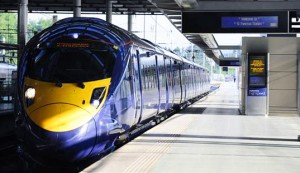 Rail travel is becoming more expensive than ever before, both in real terms and in comparison to wages, statistics from the Office of Rail Regulation indicate. Walk-on passengers are now paying as much as 23.1 per cent more than they were just nine years ago.
Rail travel is becoming more expensive than ever before, both in real terms and in comparison to wages, statistics from the Office of Rail Regulation indicate. Walk-on passengers are now paying as much as 23.1 per cent more than they were just nine years ago.
Many domestic rail routes are now significantly more expensive for consumers than long-haul international flights. In a recent study by the Telegraph, reporters found that customers could purchase a return ticket from Newcastle to Marrakech for £139, while return travel from London to Newcastle via rail costs £301.
Rail travel is one of several sectors to have increased in price at a rate significantly above the average inflation rate, causing problems for the millions of people that rely on rail transportation for their daily lives. Passengers are protected from the forces of inflation by the government, but only for certain rail services.
The prices of season tickets, for example, are controlled by the government, giving daily commuters a reasonable degree of certainty over costs. Despite this, they have still increased in price by 12.7 per cent over the past nine years – significantly above the inflation rate for most consumer goods and services.
Daily tickets, particularly same-day tickets, have risen in price at a rate far above the official inflation rate. Travellers who purchase their tickets on the day of travel have no protection from the government regarding pricing, and many believe that today’s rail prices are simply too high to remain competitive.
Long-distance routes have seen the most significant price increase, up by 17.9 per cent in the last nine years. The rising cost of long-distance train travel, along with the significant reduction in long-haul airfare pricing, has resulted in many former train travellers opting to fly to and from their holiday destinations.





